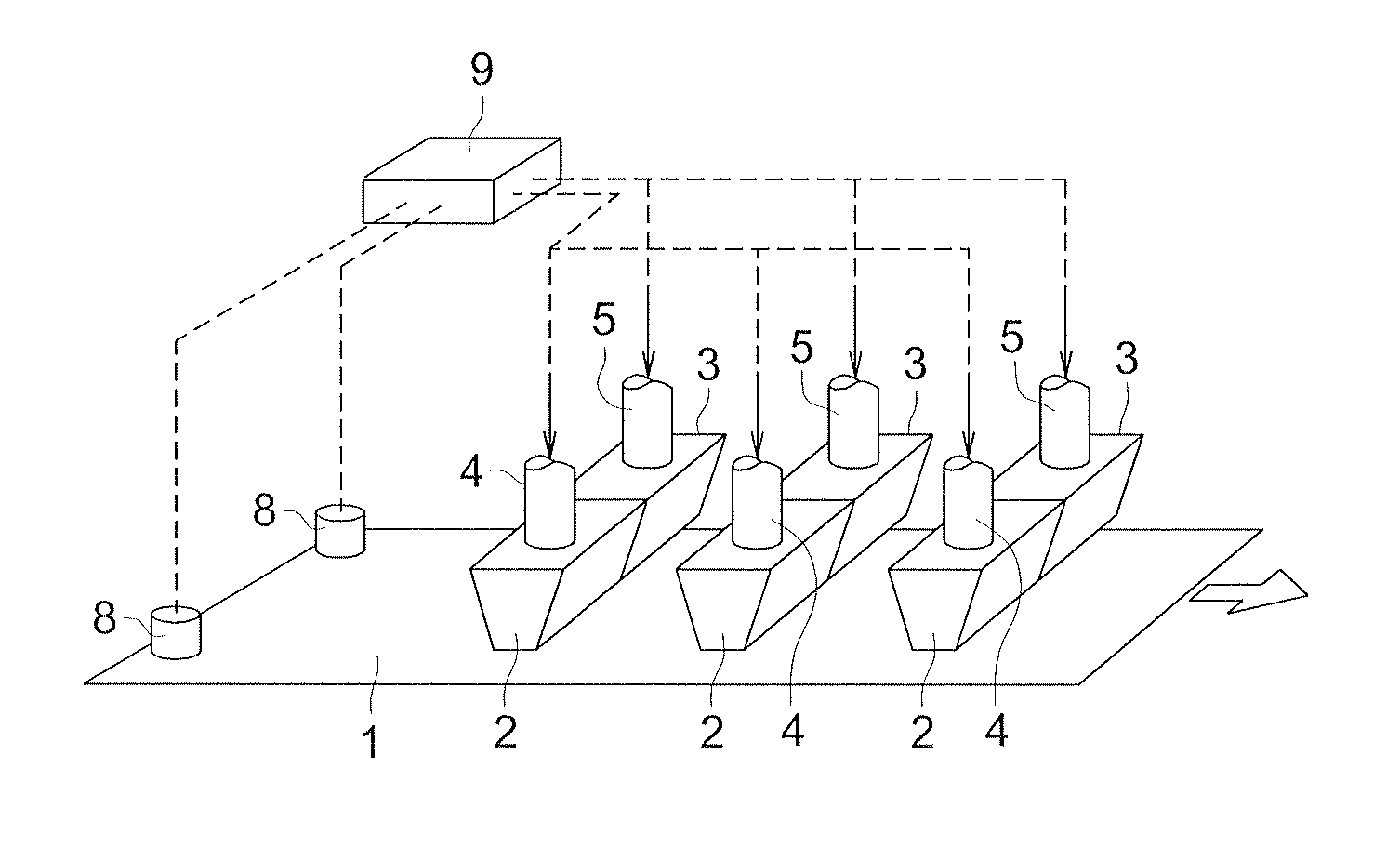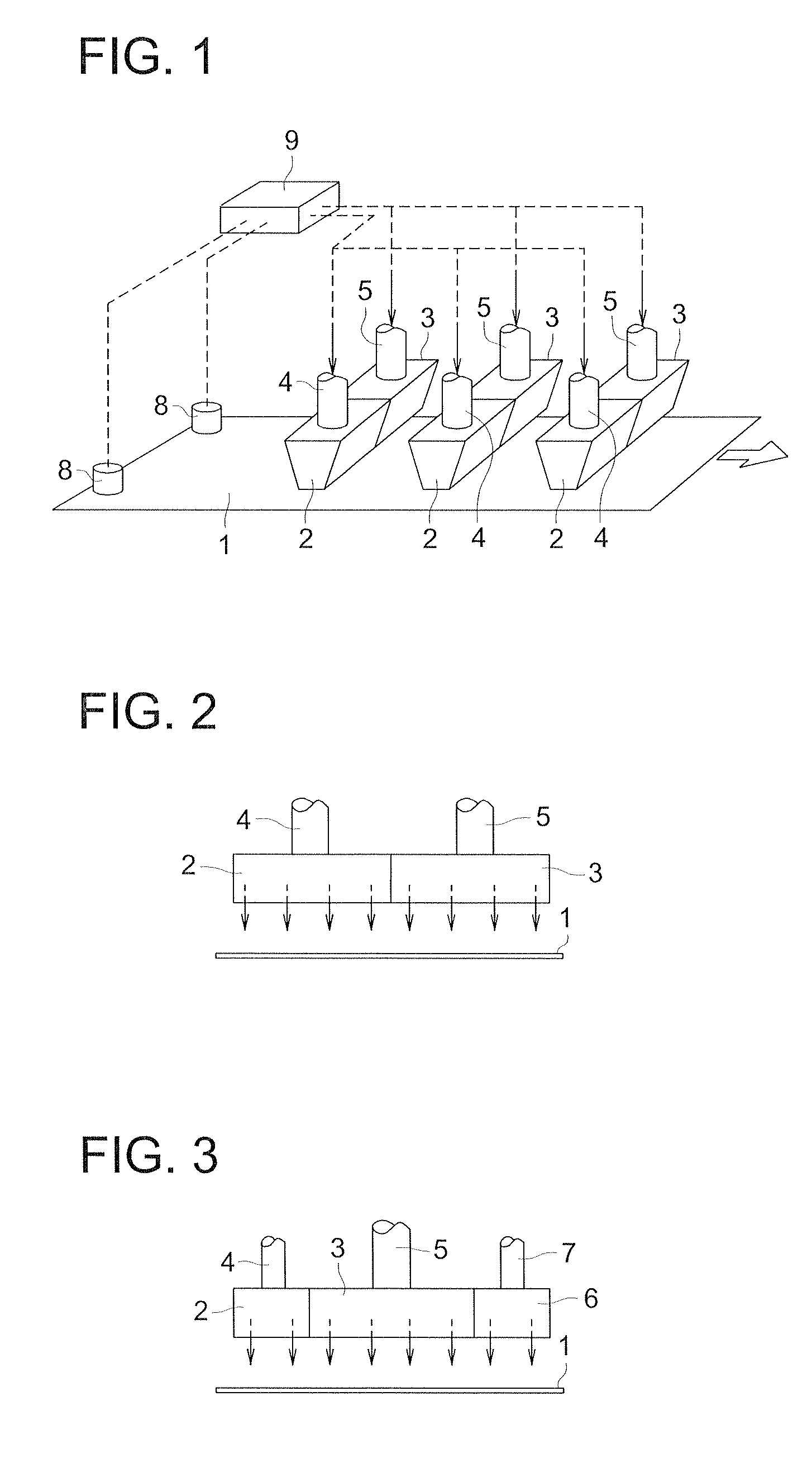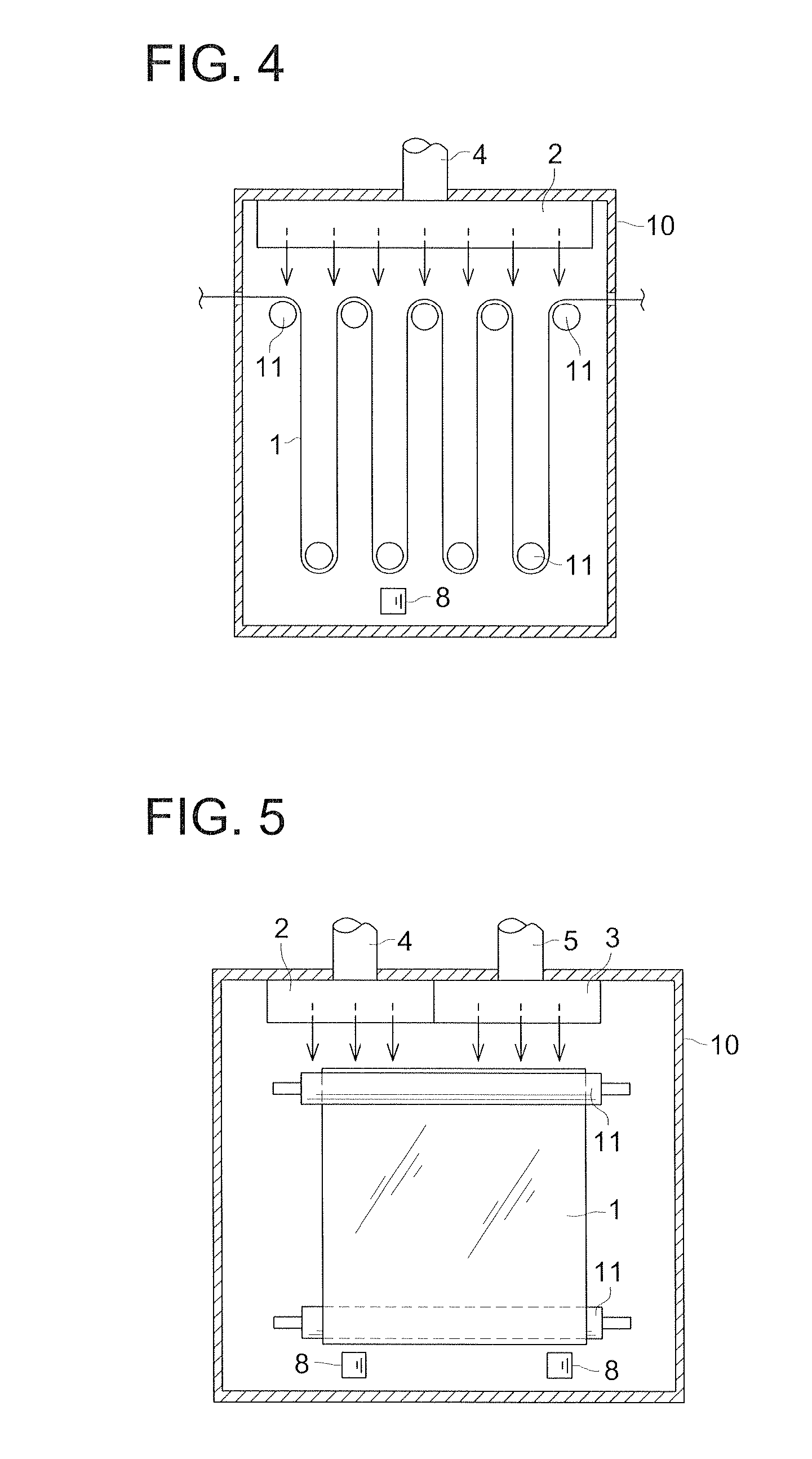Optical film manufacturing method, optical film manufacturing apparatus and optical film
a manufacturing method and optical film technology, applied in the field of optical film manufacturing methods and optical films, can solve the problems of difficult to meet the aforementioned requirements, limit the uniformity of production equipment, and further difficulties in long-term maintenance of high accuracy, so as to reduce deviation and high accuracy
- Summary
- Abstract
- Description
- Claims
- Application Information
AI Technical Summary
Benefits of technology
Problems solved by technology
Method used
Image
Examples
example 1
[0269] Before manufacturing the cellulose acetate propionate film having a target dry thickness of 80 μm according to the solution-casting film-forming method based on the method of manufacturing the optical film of the present invention, firstly a doping solution was prepared.
[0270] (Preparation of Dope)
[0271] The cellulose triacetate propionate dope was prepared as follows:
Cellulose triacetate propionate100parts by weight(Acetyl group replacement ratio of 1.95 and100parts by masspropionyl group replacement ratio of 0.7)Triphenyl phosphate10parts by weightEthylphthalylethylglycolate2parts by weightTINUVIN 3261parts by weight(by Ciba Specialty Chemicals K.K)AEROSIL 200V (Nippon Aerosil Co., Ltd.)0.1parts by weightMethylene chloride300parts by weightEthanol40parts by weight
[0272] The dope was prepared by taking the steps of: putting the aforementioned materials sequentially into the enclosed container; raising the temperature inside the container from 20° C. to 80° C.; and stirri...
example 2
[0279] Example 2 was conducted with the same manner as Example 1 except that in Example 2, a temperature of a hot air blown onto a thicker portion of a film thickness was set 5° C. higher than that of a hot air blown onto a thinner portion of a film thickness, being relatively higher than Example 1.
[0280] The cellulose triacetate propionate films of Examples 1 and 2 prepared according to the aforementioned procedure were tested as follows: A retardation measuring sensor (KOBRA-WX by Oji Scientific Instruments) was used to measure the retardation along the lateral direction of the film at an interval of 50 mm, and the maximum and minimum values of the retardations along the lateral direction of the film. The results are given in the following Table 1.
example 3
[0284] In Example 2, the cellulose triacetate propionate film was produced similarly to the manner of Example 1. The difference in the manner from that used in the Example 1 is that the apparatus shown in FIGS. 6 and 7 was used to adjust the velocity of the hot air (dry air)—not the temperature of the hot air (dry air). A position-variable baffle plate 12 was installed close to the air outlet 2a of the hot air spraying header 2 to adjust the velocity of a dry air.
[0285] As described above, according to the Example 3 of the present invention, the solution-casting film-forming apparatus for embodying the method of the present invention comprises, in the drying zone, right and left headers 2 and 3 provided side by side along the lateral direction of the conveyed film and for spraying hot airs with different air velocities; and film thickness measuring sensors 8, 8 (refer FIG. 1) for measuring thicknesses of the conveyed film. The velocity of the hot airs are adjusted in response to th...
PUM
| Property | Measurement | Unit |
|---|---|---|
| thickness | aaaaa | aaaaa |
| visible light transmittance | aaaaa | aaaaa |
| visible light transmittance | aaaaa | aaaaa |
Abstract
Description
Claims
Application Information
 Login to View More
Login to View More - R&D
- Intellectual Property
- Life Sciences
- Materials
- Tech Scout
- Unparalleled Data Quality
- Higher Quality Content
- 60% Fewer Hallucinations
Browse by: Latest US Patents, China's latest patents, Technical Efficacy Thesaurus, Application Domain, Technology Topic, Popular Technical Reports.
© 2025 PatSnap. All rights reserved.Legal|Privacy policy|Modern Slavery Act Transparency Statement|Sitemap|About US| Contact US: help@patsnap.com



